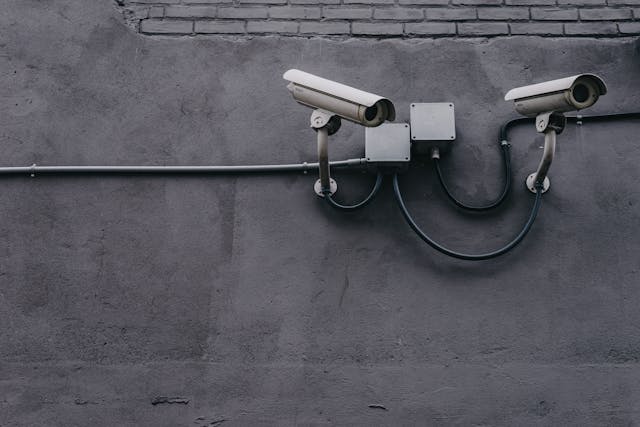Zosi H.265 ZR2323M camera firmware update guide: How to safely upgrade and troubleshoot your device.
Upgrading a camera’s firmware is one of those quiet little operations that can transform your experience, or ruin your day if you rush it. The Zosi H.265 ZR2323M camera is no exception. Done right, the update can improve performance, fix annoying glitches, and even unlock new capabilities. Much like implementing effective marketing tools for small businesses, proper technical preparation ensures smooth operations. Done wrong, you could end up staring at a lifeless black screen wondering what went wrong.
This guide isn’t another sterile technical manual. It’s a full journey through the firmware update process for the Zosi H.265 ZR2323M camera, honest, human, and deeply practical. We’ll walk through the process carefully, highlight mistakes people often make, and cover recovery strategies if things go sideways.
Let’s get into it.
Article Breakdown
Why Bother Updating the Firmware?
The firmware inside your Zosi camera is its operating brain, the layer that dictates how the hardware behaves. Over time, Zosi releases firmware updates to refine how that brain works. Updating it can give you:
- More stability: If your camera occasionally freezes or disconnects, updates can smooth those hiccups.
- Better compatibility: Newer NVRs, apps, and protocols may need updated firmware to communicate properly.
- Enhanced security: Vulnerabilities get patched, reducing your exposure to cyber risks.
- Feature upgrades: Occasionally, an update brings smarter motion detection, improved IR night vision, or better compression efficiency.
Skipping updates means missing those benefits, but blind updating without prep can spell disaster. Let’s make sure that doesn’t happen.
What to Know Before You Touch Anything
If you’ve ever bricked a device before, you know the pain. Firmware updates are delicate. These are lessons learned from real experiences and user reports:
- The ZR2323M model isn’t always listed in Zosi’s public firmware repositories, so double-check your exact hardware version.
- The file name matters, even an extra space or parenthesis in the name can make the camera ignore it.
- USB drives are picky: older, small-capacity (under 16 GB) USB 2.0 drives work more reliably than shiny new USB 3.0 sticks.
- Interrupting the update (by pulling the plug or losing power) can lock your device into a boot loop.
- And most importantly: always have a fallback plan. If the firmware fails, you might need to recover manually or contact support.
Step 1: Identify Your Camera and Firmware Version
Before updating, you must know exactly what you’re working with. On the bottom of your Zosi camera, you’ll find a sticker that lists the model number (ZR2323M), serial number, and sometimes a hardware revision. Write it down, it’ll help you get the right firmware file later.
If your camera is already online, log into its interface (either through a browser or the Zosi client software) and look for:
- Current Firmware Version
- Hardware Version
- Build Date
If your camera connects to an NVR, you can find this under System Information or Device Details. Knowing these details is essential before proceeding.
Step 2: Getting the Right Firmware File
Here’s the tricky part: the firmware file for the ZR2323M isn’t always easy to find. Many firmware pages list generic H.265 cameras, but not all firmware builds are compatible.
The smartest and safest route is to contact Zosi support directly. Provide them with:
- The exact model (ZR2323M)
- Serial number
- Hardware version
- Current firmware version
They’ll typically respond with the correct .img file and instructions. Never download firmware from random sites, it’s easy to end up with modified or corrupted files that could permanently damage your camera.
Step 3: Prepare Your USB Drive
If you’re performing an offline update via USB, preparation matters more than you think. Here’s the formula that works:
- Use a USB 2.0 drive (8 GB–16 GB max).
- Format it as FAT32, no other format will do.
- Copy the firmware file to the root of the USB (not inside any folder).
- Ensure the filename matches exactly what Zosi support provided.
- Safely eject the USB from your computer.
Avoid large USB drives or exFAT formatting, many Zosi models fail to detect those properly.
Step 4: Updating via the Zosi Search Tool (Recommended)
If your camera supports network-based updates, this is the cleanest way to do it.
- Connect your PC and the camera to the same router or switch.
- Launch the Zosi Search Tool (you can download it from Zosi’s support section).
- Click Search or Scan to find devices on your network.
- Select your camera from the list.
- Choose Update Firmware or Upgrade, then browse for the firmware file.
- Click Start Update and wait patiently, don’t close the program or disconnect the camera.
- Once it’s done, the camera will reboot automatically.
After the reboot, refresh the list and verify that the firmware version number has changed.
Step 5: Updating via USB (If Network Update Fails)
If the search tool doesn’t work or your camera is isolated from the network, the USB method can still save the day.
- Power off the camera.
- Insert your prepared USB drive into the camera’s USB port.
- Power the camera back on.
- Wait several minutes. The camera will automatically detect the update file and begin the firmware installation process.
- When the LED stops blinking (or after about five minutes), remove the USB and let the camera reboot.
If nothing happens, try reformatting the USB or renaming the firmware file exactly as Zosi specifies, some cameras only detect a certain name like “update.img” or “upgrade.img”.
Step 6: Updating Through the NVR (If Connected)
If your camera is paired with a Zosi NVR, the NVR can sometimes push the firmware update directly.
- Insert the USB drive with the firmware into the NVR.
- On the NVR menu, go to System > Upgrade or Device Upgrade.
- Select the camera and choose the firmware file.
- Start the upgrade process and monitor the progress bar.
- When complete, the NVR will notify you and reboot the camera automatically.
This method is often safer than standalone USB updates because the NVR manages communication during the process.
When Things Go Wrong (And They Might)
Here’s where reality hits. Even if you follow every step carefully, things can still go wrong. Common symptoms include endless reboot loops, frozen loading screens, or cameras that vanish from your network entirely.
Here’s how to handle them:
If the Camera Gets Stuck on Boot
- Unplug power, wait 10 seconds, and plug back in.
- Try a different USB drive with the firmware file renamed properly.
- Use a smaller-capacity USB stick (under 8 GB) formatted again as FAT32.
- Hold the camera’s reset button during power-up for about 15 seconds.
If that fails, contact Zosi support. They can provide a “recovery firmware” file or, in extreme cases, guide you through a TFTP-based recovery process.
If the Version Doesn’t Change After Updating
That usually means the firmware wasn’t recognized. Recheck:
- The exact filename (case-sensitive)
- The USB formatting
- The correct hardware version
Then retry the process.
If You Lose All Settings
Unfortunately, this is common. Firmware updates often reset all configurations to factory defaults. You’ll need to reconfigure Wi-Fi, network settings, and motion detection again. Keeping a written record of your old setup saves a lot of time here.
Step 7: Verifying the Update
When your camera reboots and you can access it again, confirm that the update worked:
- Check the System Information menu for the new firmware version.
- Test the live feed, especially motion detection, night vision, and streaming quality.
- Confirm network stability by viewing the camera over several hours.
- Verify integration with your NVR or mobile app.
- Test RTSP or ONVIF streaming if you use third-party software.
If all these check out, congratulations, you’ve successfully updated your Zosi H.265 ZR2323M firmware.
Lessons from the Field
I’ve learned (and seen others learn) a few hard truths about updating Zosi cameras:
- Using a USB 3.0 stick almost always fails; USB 2.0 is safer.
- Changing a firmware file’s name even slightly (like adding “(1)”) breaks recognition.
- Power cuts mid-update can brick the camera permanently.
- After updates, default network configurations may change, leaving your camera on a different IP subnet.
- Some updates quietly improve low-light performance without noting it in changelogs.
There’s a strange satisfaction in doing it right, seeing your camera reboot smoothly, the interface load faster, and the live feed sharpen slightly. It’s a small victory for patience and preparation.
Common Myths About Zosi Firmware Updates
| Myth | Reality | Explanation |
|---|---|---|
| “Any Zosi firmware works on any model.” | False | Each model has unique hardware drivers. Mismatching firmware can brick your camera. |
| “Bigger USB drives work better.” | False | Older and smaller USB drives are often the only ones detected reliably. |
| “Firmware updates always add new features.” | Not always | Many updates simply fix bugs or improve stability. |
| “If something goes wrong, there’s always an easy recovery.” | Unfortunately false | Some failures require specialized tools or support intervention. |
It’s tempting to rush through, but patience is what saves you from the panic of a dead device.
After the Update: How to Test Real Improvement
After completing the update, observe your camera’s behavior for at least a day. Ask yourself:
- Does the camera reconnect faster after power outages?
- Are there fewer random disconnections from your NVR or app?
- Does night vision look cleaner or switch modes more smoothly?
- Is the live feed lag shorter?
You might not notice drastic changes, but subtle improvements, stability, smoother transitions, quicker reconnects, mean the update succeeded.
Key Takings
- Always identify your camera’s exact model, firmware, and hardware version before updating.
- Use only firmware files provided directly by Zosi or verified official sources.
- Format USB drives as FAT32 and avoid large capacities or USB 3.0 drives.
- Network-based updating through the Zosi Search Tool is typically safer than manual USB updates.
- Interrupting power or renaming the file incorrectly can brick your camera.
- Expect your settings to reset, back up configurations in advance.
- After updating, test every major feature to confirm stability and functionality.
- Firmware updates bring genuine benefits but demand patience and care.
Additional Resources:
- How to Upgrade the Firmware on Your Security DVR or NVR: A step-by-step overview of firmware updating methods and how to avoid common mistakes.
- Complete Zosi IP Camera Setup Guide (ONVIF, RTSP, and Integration): A useful walkthrough for configuring Zosi cameras with third-party platforms after firmware changes.



